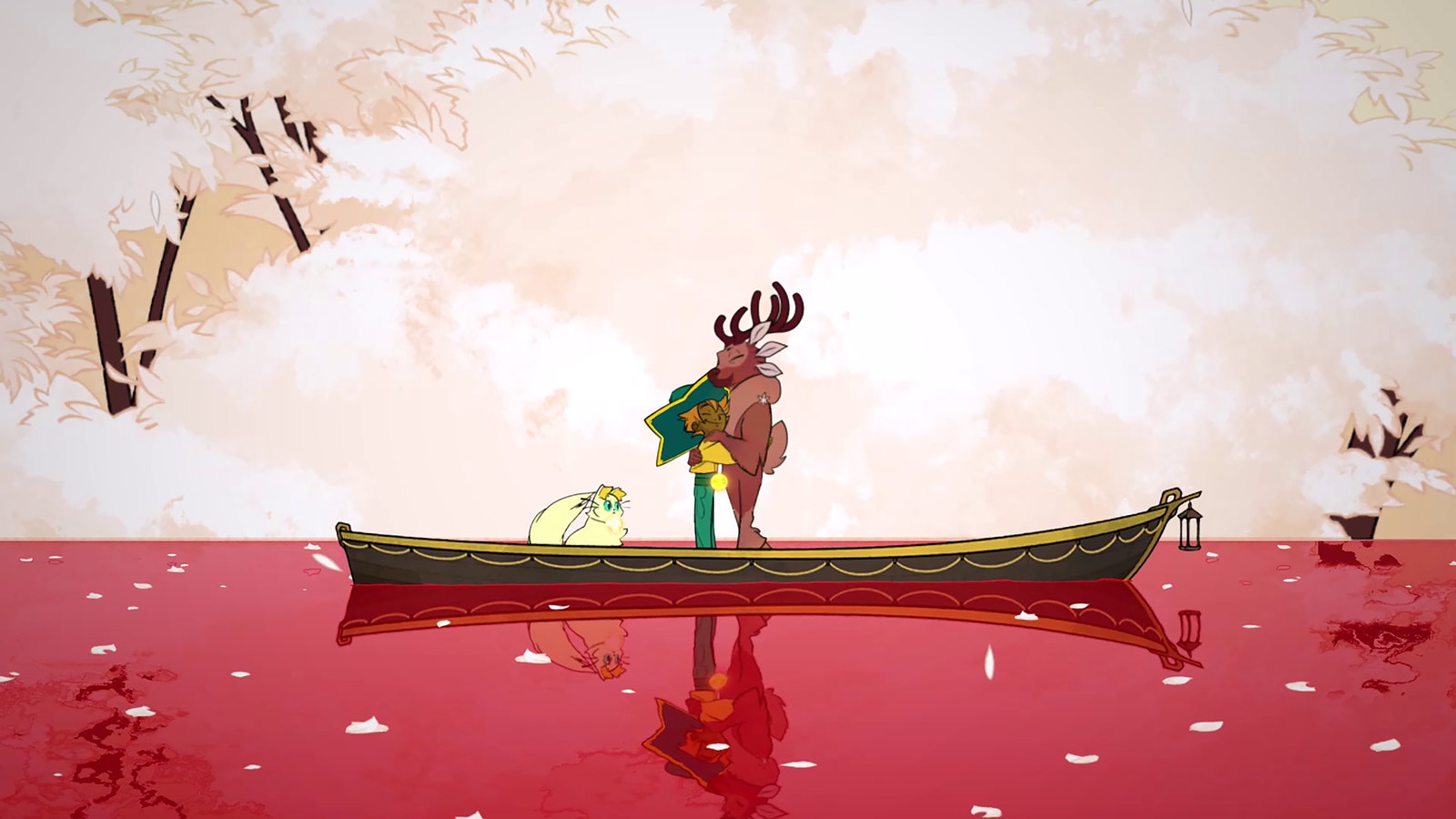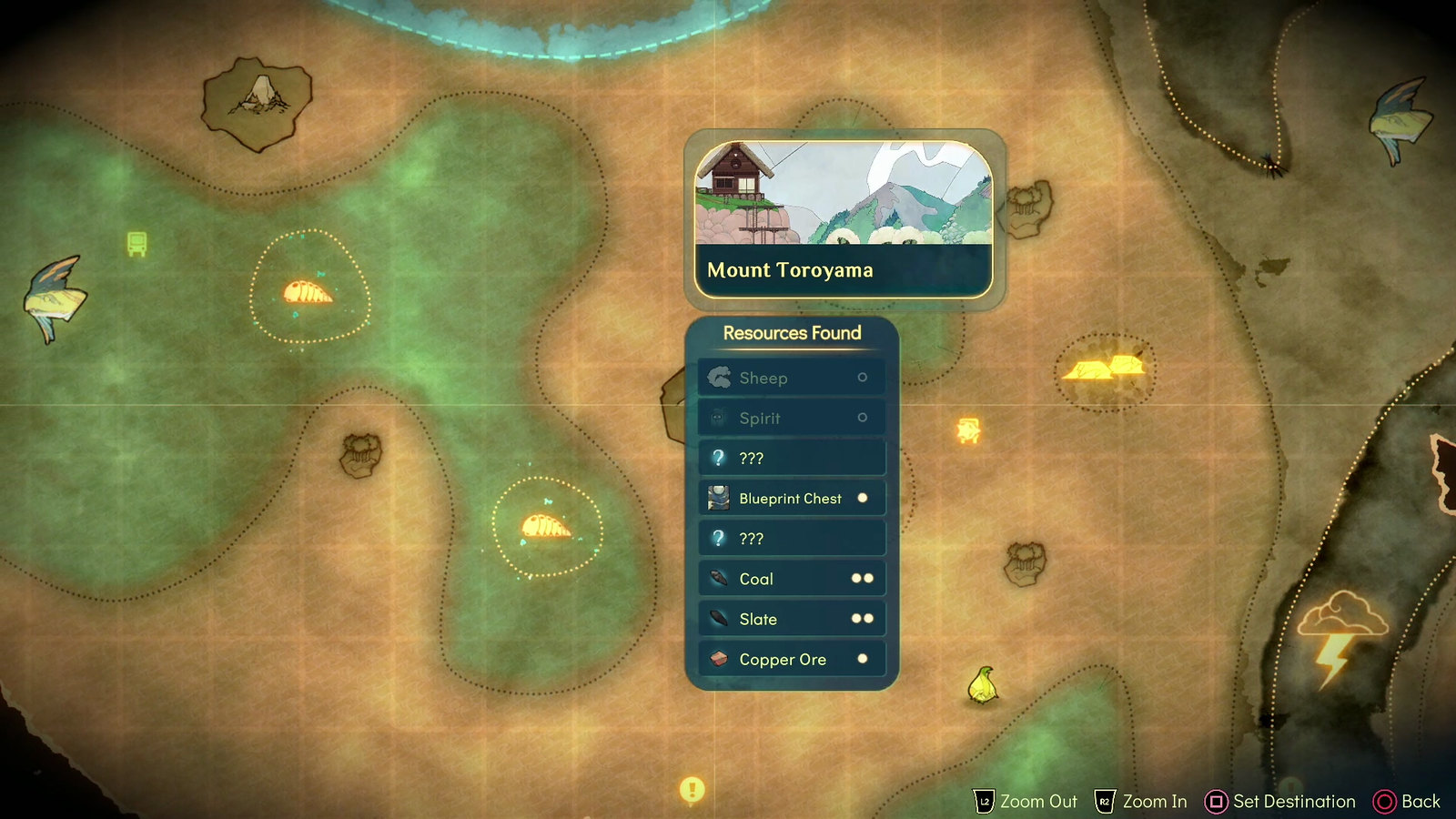Hey everyone! I’m Nick, Spiritfarer’s Creative director. I’m very happy to be announcing the game’s release today. To those of you just joining us, we call Spiritfarer a “cozy management game about dying.” We designed it to be a wholesome, soothing, and welcoming game — something that we believe a lot of us need in what’s been a pretty challenging year! So I’d like to go into a few details about how we accomplished that goal.
Spiritfarer is inspired by the ancient Greek myth of Charon, who ferried the souls of the dead across the River Styx. You play as Stella, the newly-appointed ferry master to the deceased. With your trusty feline companion Daffodil, you build a boat to explore the world, then befriend and care for spirits before finally releasing them into the afterlife.
Many of the core mechanics of the game will be familiar to anyone who has ever played a farm sim or other management games, such as Stardew Valley. So too in Spiritfarer do you inherit a ramshackle boat, which as a matter of course needs fixing and improving to get it up to speed; this will continue and progress organically throughout the game. But the crucial element that we were determined to infuse into Spiritfarer is motivation: why you do what you do.
In short, Stella has inherited from Charon not just a floating fixer-upper, but also great responsibility towards her passengers, the spirits on their final voyage. Kindness and care are the main motivations behind the game’s actions, around which all gameplay mechanics revolve.
As you sail across mystical seas, many spirits join your journey and request that Stella accomplish a wide variety of unexpected and surprising tasks. You do not fulfill these requests incidentally, or simply in order to optimize your boat, amass resources, or progress your own main quest. Rather, we designed the game to flip that motivation on its head: the spirits, at a fundamental level, are Stella’s mission. Boat optimization, resource gathering, crafting, farming, fishing — all these things are solely motivated by kindness towards the spirits, to help get them to their final destination.
We wanted coziness to permeate all aspects of the game, from the world visuals to the boat stations minigames which allow Stella to create and transform resources. Kindness is both a feeling and an action, performed for example through the hugs Stella can give to her passengers, as well as discovering and preparing each spirit’s favorite dish. In return, happy Spirits will reward Stella with gifts and advice, but also teach her how to use stations, interact with sea events, and be a better Spiritfarer.
To be as realistic as possible, we wanted Spirits to have moods that could be affected by many different elements, some of them independent of the player’s actions. Keeping their moods high can sometimes be challenging, but we see this as not only thematically important as the characters live through their final days, but mechanically engaging as well.
The final key to motivating the player to act kindly and caring towards the spirit passengers was to truly build these characters’ stories with heart. Many of Spiritfarer’s characters are inspired in part by persons that deeply touched members of the development team before passing on. They will continue to live on in our game, through spirit personalities, anecdotes, preferences — our tribute to those we have lost, but are still very much with us. Our hope is that this will be subtly felt in the writing and the game, that this will help these characters be compelling, and that your motivation to be kind to them should come naturally.
On behalf of the entire team, thank you so much for checking Spiritfarer out — we hope you enjoy the experience.
Thanks for reading!











